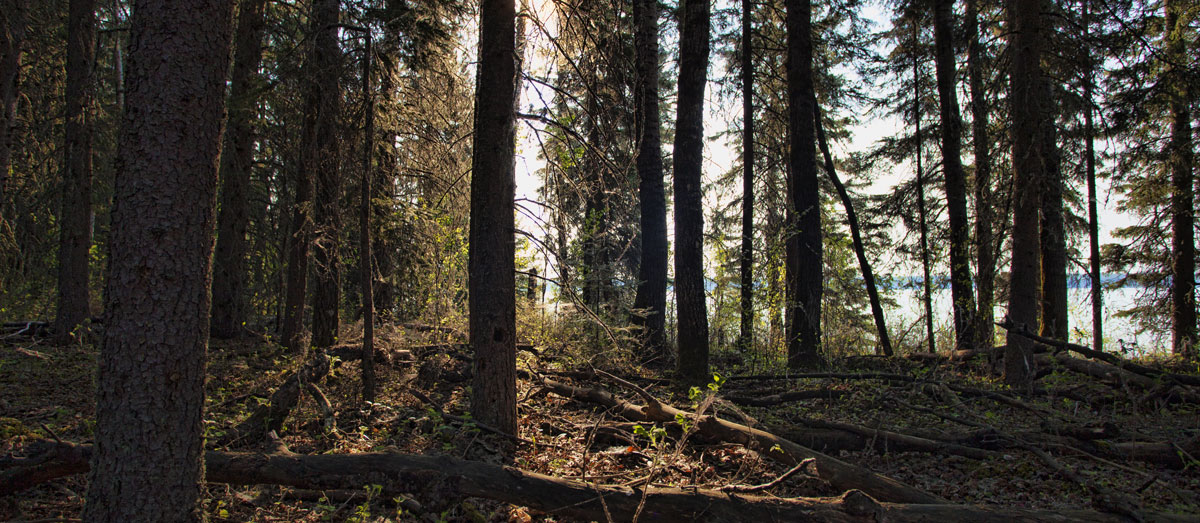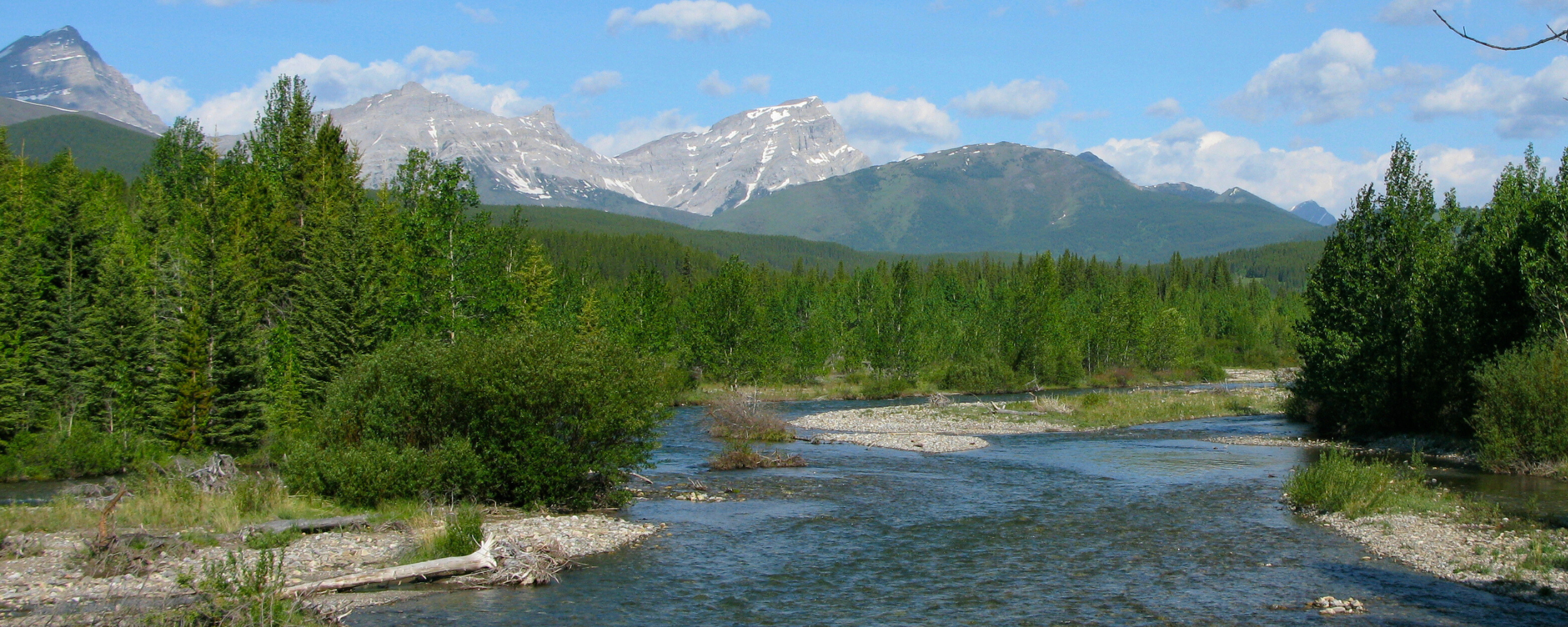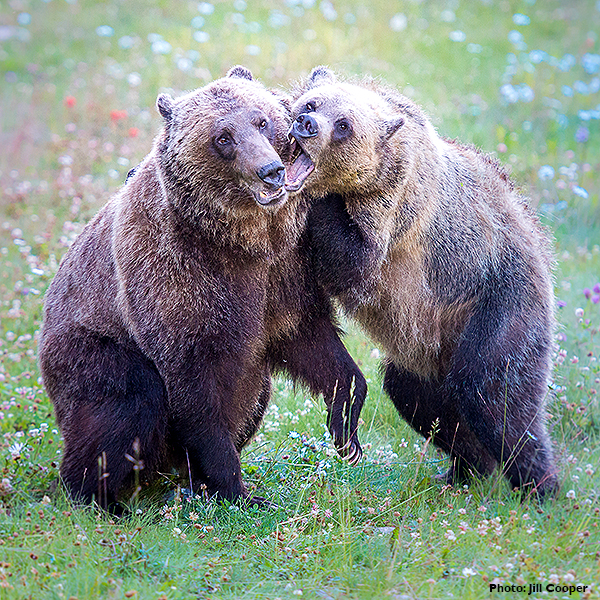So you have been waiting all week for the weekend to get out onto the trails in Banff or K-Country. You poured over your maps or have gone on line to get some trail recommendations and now have your heart and plans set for the “Best-Day-Hike-Ever” trail somewhere in Banff National Park. A 20 km loop of gorgeous backcountry with lots of elevation, meaning plenty of wildflowers and breathtaking views.
But low and behold, you arrive at the trailhead and there is that vexing red ribbon across the trail and a red bordered sign saying “Closure” with a black silhouette of a bear. What to do? You didn’t really have a plan B and have driven all this way. Maybe it really means just be careful. After all there are 4 of you going… and you have bear spray… and Fido is on a stout leash so perhaps we can just sneak under the ribbon as long as we sing or make lots of noise and stay close together… I’m sure well be OK. Probably. Sound familiar?
But then you have second thoughts, look a bit closer and notice the fine print mentions a potential $25,000 fine…ooops! Don’t want that… so a quick look at your map and you realize that “Second-Best-Day-Hike-Ever” trail is only a few miles away. But when you arrive there, it has yellow ribbon and a yellow bordered sign saying “Warning” with a silhouette of a bear underneath. Then it lists the things you need to do to ensure your safety; travel in a group – CHECK, carry bear spray – CHECK, keep dogs leashed – CHECK, make noise – CHECK. So after a quick huddle you decide you comply with all the safety criteria and off you go… slightly delayed but secure in the knowledge you have not only reduced your risk but the risk to the bear as well.
Last month a solo hiker at the east end of Lake Minnewanka encountered a grizzly cub followed immediately by it’s mother. He had to use his bear spray, although he was fortunate that the mom decided the situation only required harsh language – in grizzly terms – and he got off with a swat, a small puncture wound in his hand, and a harrowing story to tell his kids. But it could have easily ended much worse. For the hiker, the mom… and the cub. While he was not in a closed area, Parks Canada subsequently brought out the red tape. This event illustrates the seriousness nature of deciding to close off an area.
Closures and Warnings are of course used to protect people, but they also serve to protect bears and other sensitive wildlife. A bear/human encounter is not only a stressful event for a person, but also for the bear. The very vast majority of bear encounters end with the bear moving away, often on the run. Of course from our perspective, that is exactly what we want to see happen. We consider a wary bear a much lower risk bear than one that is habituated to humans. But flight also indicates the bear is under stress.
I once encounter 3 grizzlies at close range when I did a solo hike on the north boundary trail in Jasper National Park years ago. I had been singing as I hiked but it was late in the afternoon, I was hot and tired, and had gone quiet, lost in thought. I came up a small hill and there they were, 3 bears walking single file down the trail only 100 m away. It was a mother with 2 cubs, both almost as big as her, so likely about 2 year olds. I started to sing again, thinking this is a non-threatening sound that identifies me as a human, but the moment I did so, the last bear in line–mom–came around the other two and rushed forward directly at me. This was a REALLY high stress moment for me, but once within 30 metres or so, she stood up to get a better look at me, then turned her cubs around and off they ran, back the way they came. As I stood quaking and clutching what seemed like a very tiny can of bear spray, I couldn’t help thinking, ‘THEY, were scared of ME…” I expected her to just move around me and carry on, but I had their tracks in front of me for the next couple days–more stress for me–until she finally veered off in a high mountain pass.
I have often thought that for her to completely reverse her direction of travel, she must have considered me quite a threat (or perhaps my singing was just that awful). I didn’t really have the option of reversing my travel as I was 3 days in and had my car at the far end… but I did sing myself hoarse the final couple days of my trip.
I also noticed that about 30 metres before every backcountry campsite, their tracks moved off the trail and reappeared 30 m or so on the other side of the campsite. They were intentionally moving off trail and around these camps; it was clear they were working hard to avoid humans. So how much stress did my encounter cause them?
National Parks have information on both closures and warnings on their Important Bulletins page and also issue a weekly Bear Report. Provincial Parks have online advisories that lists all areas having temporary closures so this is a simple check before you head out. Both agencies use the YELLOW WARNING and RED CLOSURE color scheme. But it is always wise to have a plan B, and perhaps even plan C; where will you go if you arrive to find your destination has just been closed?
Respecting Parks closures and complying with the safety conditions of a warning does three things; it reduces your risk, even if that is a relatively small one, it reduces stress on bears, and it can set a powerful example for those folks who are not backcountry savvy or are newbies to our parks. Seeing the locals disregard a closure or not following the rules of a warning sends a clear signal that the red or yellow ribbon is optional.
It is not.
Peter Zimmerman
Parks Program Coordinator
CPAWS Southern Alberta
More Blog Posts

Speak Up, Write Out: The Power of a Local Op-Ed

Fine Issued to Forestry Operator for Erosion Control Failures


